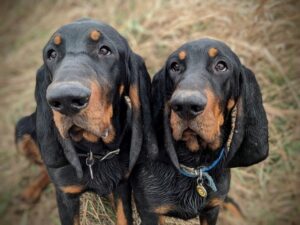
Raven Klone | Old Soul Kennel
Raven Klone is the breeder behind Old Soul Kennel. Read about the kennel’s beginnings, the sires, the dams, the puppies, and much more!

Home » Dog Breeds » Black and Tan Coonhound Dog Breed
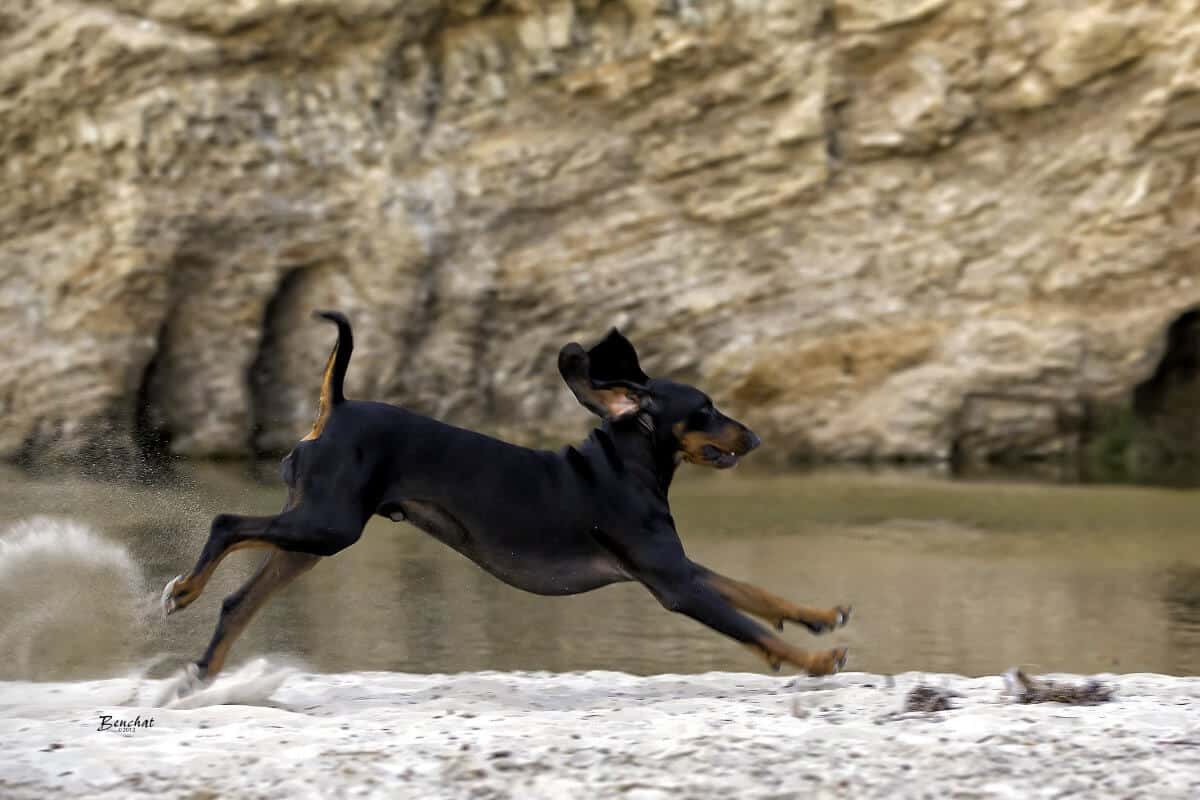
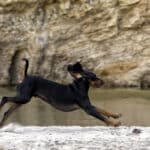
The Black and Tan Coonhound, often referred to simply as the Black and Tan, is a distinctly American breed known for its strong hunting instincts and unwavering persistence. Originally bred to hunt raccoons and other large game, these hounds combine the acute scenting powers of the Bloodhound with the agility and determination of various scenthound breeds, making this breed a particularly exceptional tracker.
Hound
23 – 27 Inches
65 – 110 Pounds
10 – 12 Years
| Country of Origin | United States |
|---|---|
| Bred For | Raccoon and Big Game Hunting, Companionship |
| Known For | Coal Black Coat with Rich Tan Markings, Athletic Figure, Rhythmic Stride |
| Popularity | Low to Moderate |
| Temperament | Even-Tempered, Outgoing, Friendly |
| Activities | Hunting, Running, Hiking, Nite Hunts, Conformation Shows, Dog Sports |
The Black and Tan Coonhound, with its impressive appearance and storied past, is a breed steeped in its American heritage. Originating in the United States, this coonhound’s history is closely tied to the nation’s earliest settlers and their need for a reliable hunting companion.
The Black and Tan’s ancestors can be traced back to the Talbot Hound, which was brought to England by William the Conqueror in 1066. In the 11th century, the hounds were crossed with the Bloodhound, resulting in a dog with an enhanced scent-tracking ability. As the English made their way to the New World, they brought the hounds with them, developing a breed on American soil that was more suitable for the various topography and climates of their new homeland.
In the United States, the imported hounds were selectively bred with local dogs, and over several generations, the Black and Tan Coonhound emerged. These hounds were specifically designed to track raccoons and other tree-dwelling animals, a trait that is evident in their name. The hounds’ ability to track scents over long distances, even in challenging environments, made them invaluable to hunters, especially those in the American South where the breed’s popularity first ascended.
Aside from hunting, the Black and Tan has played a notable role in the development of other American coonhound breeds. Their genes contributed to the creation of similar hounds such as the Bluetick Coonhound and the Redbone (American English) Coonhound.
In terms of official recognition, the American Kennel Club (AKC) recognized the Black and Tan Coonhound in 1945. The Fédération Cynologique Internationale (FCI) also recognized the breed that year, firmly establishing its position within the canine community on a global scale.
Over the years, while the Black and Tan Coonhound’s role as a hunting companion has somewhat diminished, but the breed’s reputation as a loyal, affectionate, and versatile dog has endured. Today, these hounds are cherished not just for their working abilities but also for their companionship, making them a beloved choice for many families and individuals in the America and around the world.
Adult male Black and Tan Coonhounds typically stand between 25 and 27 inches tall at the shoulder, while mature females tend to be slightly smaller, measuring 23 to 25 inches in height.
As for their weight, adult Black and Tans generally weigh from 65 to 110 pounds.
The Black and Tan Coonhound possesses a well-proportioned structure, with moderate bone and good muscle tone. Its body length is equal to or slightly greater than its height at the withers, giving it a somewhat rectangular outline. The breed showcases a deep chest, providing the ample lung that’s needed for stamina. The bones are strong and well-developed, but not so much as to appear cumbersome or to compromise the hound’s agility.
Texture: The Black and Tan Coonhound boasts a short, dense coat that is sleek and glossy. The texture not only provides a certain elegance to the breed’s appearance, it also serves a functional purpose. The coat is designed to protect the hound in rough underbrush and other challenging vegetation that it might encounter during a hunt.
Colors: Black & Tan
Markings: Tan Markings
A Note About Color: The short but dense coat of the Black and Tan Coonhound is richly colored. The black is “coal” black, and the precise tan markings should not be muddied by any black hairs. The tan markings appear above the eyes, on the sides of the muzzle, and on the chest, legs, and breeching. Additionally, black “pencil” markings appear on the toes. White on the chest, greater than one inch in size, is unacceptable on this black and tan breed.
The tail of the Black and Tan Coonhound is a vital aspect of its overall appearance and balance. It is thick at the base and tapers to a fine point. The coat on the tail is short and dense, consistent with that on the rest of the body.
The tail is set slightly below the level of the backline. It extends as a natural continuation of the spine, adding a particular elegance to the breed’s silhouette. When the dog is in motion or alert, it is carried high, indicating confidence and vigor. At rest, the tail hangs freely and reaches the hocks.
Choosing to bring a Black and Tan Coonhound into one’s life is a decision that promises years of faithful companionship, loyalty, and adventure. However, it’s crucial to understand the unique requirements and traits of this hunting hound to ensure a harmonious relationship for everyone concerned.
The Black and Tan Coonhound, like any other breed or mixed breed, comes with its own health considerations. Generally, these are robust and hardy dogs, known to live long and healthy lives when provided with proper care.
Lifespan: The average lifespan of the Black and Tan ranges between 10 and 12 years. With a balanced diet, regular exercise, and routine veterinary check-ups, many have been known to reach their mid-teens in good health.
Like all dogs, some Black and Tan Coonhounds can be susceptible to certain health conditions. While not every coonhound will encounter them, early detection and appropriate preventative measures are essential. Potential risks include:
In light of these concerns, regular veterinary exams are invaluable. These not only ensure the timely detection of potential issues, they also allow for routine health maintenance, vaccinations, and preventive treatment that every Black and Tan Coonhound deserves.
The Black and Tan Coonhound is a breed filled with character and individuality. While the breed’s hunting heritage shines through in many behavioral traits, these hounds can also make loving and dedicated companions.
While these hounds are indeed friendly and loyal, the Black and Tan’s independent nature, combined with its strong hunting instincts, might pose challenges, especially for first-time dog owners. Consistent training and an understanding of canine behaviors are essential to harness the best qualities in these dogs. Their sensitivity is another trait that stands out; these coonhounds form strong bonds with their families and often tune in to the emotions of their owners, making them particularly responsive to positive-reinforcement training methods.
However, these hounds value companionship. Their dislike for prolonged isolation can lead to unwanted behaviors such as destruction or vocalization if left alone for extended periods. Given their pack-hunting background, they generally get along well with other dogs, making them suitable for households with multiple canine members. Proper socialization from a young age ensures they mature into well-adjusted adults, both with their own kind and with humans.
Children will find a gentle and patient friend in the Black and Tan Coonhound, though interactions should always be supervised, especially with younger kids, due to the breed’s size and enthusiasm. When it comes to strangers, the alert nature of these hounds comes to the forefront. Initially wary, with consistent socialization and training, they can discern friendly visitors from potential threats. Once they’ve warmed up, they exhibit a welcoming and sociable demeanor.
Feeding a Black and Tan Coonhound appropriately is vital for maintaining health and energy levels. The dog’s nutritional needs can vary based on factors such as age, activity level, and overall health. Puppies, for instance, require more frequent meals packed with essential nutrients to support their rapid growth. Feeding them 3 to 4 times a day can be beneficial during their first few months.
As the coonhound transitions into adulthood, feeding frequency can be reduced. Typically, an adult Black and Tan will thrive on two well-balanced meals a day. The actual amount of food needed will depend on size, activity level, and the type of dog food being provided. It’s always a good idea to consult the feeding recommendations on the dog food label and to discuss a feeding regimen with a veterinarian, who might suggest a specific amount, often measured in cups per day.
Nutrition plays a crucial role in the overall well-being of a Black and Tan Coonhound. Investing in high-quality dog food, preferably with meat as the primary ingredient, can ensure the dog receives the essential nutrients. It’s best to steer clear of foods that list fillers or unspecified meat by-products as primary ingredients. Additionally, while treats can be a beneficial training aid, they should be given in moderation to avoid weight gain and related health issues.
Regular weight checks and monitoring for signs of obesity can guide any necessary adjustments in the Black and Tan Coonhound’s diet. An overweight coonhound can become susceptible to various health issues, including joint problems and heart diseases.
Training a Black and Tan Coonhound offers a unique teaching experience, blending the breed’s innate hunting instincts with its desire for companionship. The independent nature of these hounds may sometimes shine through, highlighting the importance of patience, consistency, and a gentle approach. Positive reinforcement methods work exceptionally well with this breed, turning training sessions into rewarding experiences for both dog and teacher.
The breed’s intelligence is always evident, but it’s often paired with a hint of stubbornness. Thus, early socialization and obedience training become crucial. Introducing a coonhound puppy to various people, animals, and environments can encourage them to grow up to become well-adjusted adults.
A noteworthy aspect of the Black and Tan’s personality is the breed’s tendency to vocalize. Originating from their hunting background, these coonhounds have a distinctive bark and bay which can become more frequent if they’re bored or left alone for extended periods. Training them to understand commands such as “quiet” can be beneficial in managing their vocalizations.
In addition to the breed’s vocal nature, these coonhounds have a penchant for following their nose. This strong scent drive can sometimes lead them astray, making recall training essential. It’s advisable to keep them on a leash or in a securely fenced area unless the trainer is confident in a hound’s recall abilities.
Although Black and Tan Coonhounds might display a streak of independence, their eagerness to please should not be underestimated. With the right motivation and consistent guidance, they can excel in various canine activities and obedience exercises.
Making sure a Black and Tan Coonhound receives adequate exercise is essential to its overall well-being and happiness. These dogs are energetic and require consistent physical activity to keep them mentally stimulated and physically fit.
| Energy Level | Moderate |
|---|---|
| Exercise Requirements | 1 Hour/Day (Minimum), Daily Walks, Vigorous Running, Regular Exercise, Playing with Another Dog, Mental Stimulation |
The breed’s hunting background means the Black and Tan has a naturally high energy level, but it’s coupled with a laid-back demeanor when this dog is at home. Thus, while these hounds might be content lounging around indoors, they still have bursts of energy that need an outlet. Regular walks, play sessions, and opportunities to run in a securely fenced area are each beneficial for them.
The Black and Tan’s exercise needs are not just about physical activity; these coonhounds also thrive when their minds are engaged. Given their scent-driven nature, activities like scent-tracking exercises can be particularly rewarding for them. These exercises tap into their innate skills, providing mental stimulation and allowing them to use their exceptional olfactory abilities.
Intensity in their workouts can vary based on age and individual temperament. While younger coonhounds might have higher playfulness levels and may require more vigorous activities, older dogs might be content with leisurely walks and shorter play sessions.
It’s worth noting that, due to the Black and Tan Coonhound’s strong scent drive, these dogs can sometimes become easily distracted during outdoor activities. This is why it’s crucial to exercise them in secure areas or keep them on a leash in order to prevent them from wandering off while following an intriguing scent.
Maintaining the handsome appearance of the Black and Tan Coonhound requires some dedicated grooming, though it’s relatively straightforward given the breed’s coat type. The coonhound’s short, dense coat is sleek to the touch and can be considered low-maintenance compared to more long-coated or curly-haired breeds.
| Coat Type | Short and Dense |
|---|---|
| Grooming Requirements | Weekly Brushing, Occasional Bathing, Routine Ear Cleaning, Periodic Nail Trimming, Regular Tooth Brushing |
One of the aspects that potential owners appreciate about the Black and Tan is that the breed’s shedding level is moderate. Regular brushing, ideally once a week, will help to remove loose hairs, promote skin health, and keep a hound’s coat looking its best. Using a firm-bristled brush or a grooming mitt can be effective in capturing dead hairs and stimulating the skin.
Beyond brushing, other routine grooming practices are essential. Regular ear checks are crucial given the breed’s floppy ears, which can trap moisture and become a breeding ground for infections. It’s advisable to clean the ears with a veterinarian-recommended solution to prevent problems from becoming established in the ear canals.
Additionally, keeping an eye on the coonhound’s nails, and trimming them as needed, is important. Long nails can be uncomfortable for the dog and can affect their gait. Dental hygiene shouldn’t be overlooked either. Regularly brushing the teeth can prevent dental issues and maintain good oral health.
Although they don’t have a strong odor, occasional baths can help to keep Black and Tan Coonhounds clean and feeling fresh. However, it’s essential not to over-bathe, as doing so can strip their coat of natural oils.
Life with a Black and Tan Coonhound can be filled with moments of joy, companionship, and the occasional scent-driven adventure. The breed’s even temperament and affectionate nature make these dogs well-suited for family living, but there are aspects of their behavior and needs that potential owners should be prepared for.
One of the first considerations when bringing a coonhound into the home is space. While these big dogs can adapt to apartment living, they fare much better when they have access to a securely fenced yard where they can stretch their legs, explore, and indulge their sniffing instincts. If an apartment or smaller living space is the only option, it becomes crucial to be sure they receive adequate daily exercise and mental stimulation to compensate for the lack of open space.
Black and Tan Coonhounds, with their short, sleek coats, handle warmer climates relatively well. However, during the peak summer months, it’s wise to provide them with plenty of shade and water, and to avoid excessive physical activity during the hottest parts of the day. In colder weather, their coat doesn’t offer the insulation that some other breeds have. As such, while they can enjoy short bursts outside in the snow or cold, they shouldn’t be left outdoors for extended periods in freezing temperatures. Some owners may opt to provide them with dog jackets or sweaters for additional warmth during chilly outings.
Being a scent-driven breed, these coonhounds can sometimes become engrossed in tracking down a particular smell, which can pose challenges in unfenced areas. For this reason, unless training has instilled rock-solid recall, it’s wise to keep them on-leash during walks to prevent them from following a scent and potentially getting lost.
In essence, living with a Black and Tan Coonhound requires an understanding of the breed’s unique traits and needs. With the right environment and care, they can seamlessly integrate into family life, providing countless moments of love, laughter, and loyalty.
The allure of a Black and Tan Coonhound puppy is undeniable. With floppy ears, curious eyes, and boundless energy, these pups bring a special kind of joy into any home. However, raising a coonhound puppy requires dedication, patience, and a deep understanding of the little one’s specific needs during this crucial developmental stage.
When a Black and Tan Coonhound puppy first arrives at its new home, it’s essential to create a safe and comfortable environment in order for it to thrive. Providing the pup with a designated space, equipped with a cozy bed and a few toys, can help it settle in and feel secure.
Diet also plays a critical role during the first few formative months. Puppies have different nutritional requirements than adult dogs, so it’s vital to select a high-quality puppy food that caters to their growth and energy needs. Regular feeding intervals, initially 3 to 4 times a day, can provide the right amount of sustenance. It’s important, however, to remember to be vigilant for signs of food allergies or intolerances and to consult a veterinarian for specific dietary recommendations.
Early socialization is another crucial component of raising a well-adjusted coonhound. Exposing puppies to various environments, people, and other animals can shape their temperament and reduce the likelihood of fear or aggression later in life. This is also an opportune time to begin basic obedience training, utilizing positive reinforcement techniques to establish a foundation for future learning.
Routine veterinary check-ups, vaccinations, and preventive care are paramount for establishing and maintaining a puppy’s good health. The first year is also the perfect time to discuss spaying or neutering options with the vet, provided the procedure has been discussed with and recommended by the puppy’s breeder.
Lastly, patience and understanding are essential during the puppy phase. As with all young animals, Black and Tan Coonhound puppies are likely to exhibit behaviors like chewing and nipping, or housebreaking accidents. Consistent training, coupled with gentle corrections and positive reinforcement, can guide them towards becoming well-mannered adults.
Engaging a Black and Tan Coonhound in various activities and dog sports is a testament to the breed’s versatility, intelligence, and natural inclinations. Derived from their historical roles and innate capabilities, coonhounds can excel in several fields that not only challenge them physically but also mentally.
In essence, the Black and Tan Coonhound’s range of skills and adaptability make this breed well-suited for various activities and dog sports. Participating in these events not only strengthens the bond between the hound and its handler, it also provides the both with essential mental and physical stimulation.
The Black and Tan Coonhound is recognized by the world’s leading registries and kennel organizations, which categorize the breed into a specific Group based on its unique characteristics. This breed is recognized worldwide under the following Group designations:
| Organization | Group Designation |
|---|---|
| AKC (American Kennel Club) | Hound |
| UKC (United Kennel Club) | Scenthound |
| CKC (Canadian Kennel Club) | Hounds |
| ANKC (Australian National Kennel Council) | Hounds |
| RKC (The Royal Kennel Club) | Hound |
| FCI (Fédération Cynologique Internationale) | Group 6: Scent Hounds and Related Breeds; Section 1: Large-Sized Hounds |
The ideal Black and Tan Coonhound is described by a Breed Standard that is approved by each of the world’s leading registries and kennel organizations. The Breed Standards for this breed may be found in the following links:
| Organization | Breed Standard |
|---|---|
| American Kennel Club | AKC Black and Tan Coonhound Breed Standard |
| United Kennel Club | UKC Black and Tan Coonhound Breed Standard |
| Canadian Kennel Club | CKC Black and Tan Coonhoundg Breed Standard |
| Australian National Kennel Council | ANKC Black and Tan Coonhound Breed Standard |
| The Royal Kennel Club | RKC Black and Tan Coonhound Breed Standard |
| Fédération Cynologique Internationale | FCI Black and Tan Coonhound Breed Standard |
Breed clubs play a pivotal role in promoting, preserving, and ensuring the welfare of specific dog breeds. These organizations bring together breeders and owners to share knowledge, collaborate on breed-specific issues, and work towards the betterment of the breed.
In the United States, the American Black and Tan Coonhound Club (ABTCC) stands as the primary breed club. Founded in the mid-20th century, the ABTCC works diligently to represent the interests of the breed at various levels. The club oversees breed standards, organizes events, and provides resources to Black and Tan owners and enthusiasts.
In Canada, the Canadian Kennel Club (CKC) recognizes the Black and Tan Coonhound, and while there isn’t a specific breed club exclusively for the breed, enthusiasts can connect through various Hound Group clubs and regional kennel clubs affiliated with the CKC.
The Black & Tan Coonhound Club of Great Britain is a hub for Black and Tan enthusiasts in the United Kingdom. It offers support and resources, and organizes events centered around the breed, thus ensuring that its legacy continues to thrive in the UK.
Being a part of or engaging with these breed clubs can offer numerous benefits. These organizations are excellent platforms for networking, learning, and immersing oneself in the world of the Black and Tan Coonhound. From sharing tips on training and health care to participating in breed-specific events, these clubs are invaluable resources for anyone who is passionate about this extraordinary breed.
For every breed, including the Black and Tan Coonhound, rescue groups play a vital role in safeguarding dogs that need a second chance at finding a loving home. These volunteer organizations are dedicated to rescuing, rehabilitating, and rehoming dogs in distress, often working tirelessly to focus on the issues of abandonment, neglect, and overpopulation.
In the United States, the Black and Tan Coonhound Rescue is an organization specifically catering to the needs of the breed. Its members focus on providing temporary shelter, medical care, and behavioral training to Black and Tans in need, with the ultimate goal of placing hounds in suitable forever homes.
While there may not be a rescue group exclusively for Black and Tan Coonhounds in Canada and the United Kingdom, broader hound rescue organizations and regional dog shelters may have coonhounds or similar breeds and mixes that are available for adoption. Prospective adopters can always reach out to local shelters or national rescue organizations for guidance.
Black and Tan Coonhounds are not inherently aggressive. They were bred primarily for tracking and hunting, which requires a level of cooperation and an even temperament. However, like any dog, individual temperament can vary, and early socialization is key to ensuring they are well-adjusted and friendly.
Absolutely! Black and Tan Coonhounds are generally friendly and affectionate, and tend to get along well with children. They can be great family companions when properly socialized. However, their size and energy level mean they’re best-suited for families that can provide them with ample exercise and space to run.
Yes, Black and Tan Coonhounds shed. They have a short, dense coat that sheds moderately throughout the year. Regular brushing can help to reduce the amount of loose hair and keep their coat healthy and shiny.
No, Black and Tan Coonhounds are not hypoallergenic. They shed, and their dander can trigger allergies in sensitive individuals. It’s always a good idea for potential dog owners with allergies to spend time with the breed before making a decision to bring one home.
Black and Tan Coonhounds are a medium- to large-sized breed. Adult males typically stand between 25 and 27 inches tall at the shoulder, with females slightly smaller at 23 to 25 inches. These hounds can weigh anywhere from 65 to 110 pounds, depending on gender and individual characteristics.
Black and Tan Coonhounds have an average lifespan of 10 to 12 years. With proper care, regular veterinary check-ups, and a balanced diet, they can lead healthy and fulfilling lives. Like all dogs, however, individuals can be prone to certain health issues, so being vigilant of small changes is crucial.
Black and Tan Coonhounds are intelligent and eager to please, which can make training more straightforward. However, they also have an independent streak due to their hunting heritage. Consistency, positive reinforcement, and early training are crucial for best results.
Yes, Black and Tan Coonhounds are intelligent dogs. Their history as hunting hounds means they have a sharp mind, keen senses, and problem-solving abilities. However, this intelligence can sometimes translate to stubbornness, so it’s essential to engage them mentally and provide consistent training throughout their long lives.

Raven Klone is the breeder behind Old Soul Kennel. Read about the kennel’s beginnings, the sires, the dams, the puppies, and much more!
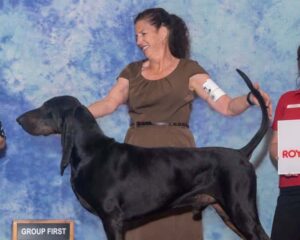
Zoe Bolin is the breeder behind Jazzman Black and Tans. Read about the kennel’s beginnings, the sires, the dams, the puppies, and more!
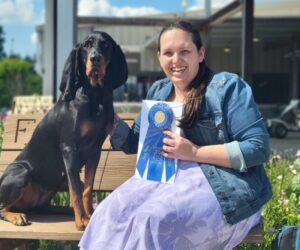
Insights from Owner Handler Nikkei (Danielle) Lyons. Read about her opinions on various topics about dog handling in the modern show ring.
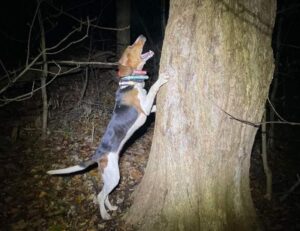
Read and learn about the various coonhound performance events, such as Nite Hunts, Bench Shows, Field Trials, and Water Races.
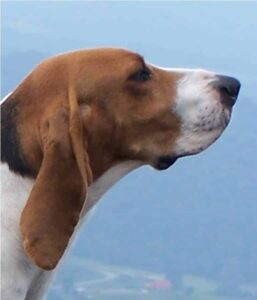
Now that coonhounds are in AKC conformation shows, it is becoming increasingly important that we focus on the correct coonhound structure
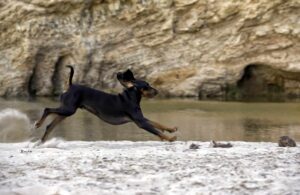
Judging The Black And Tan Coonhound – “The Black and Tan Coonhound is first and fundamentally a working dog; a trail and tree hound, capable

"*" indicates required fields
Showsight Magazine–the world’s most influential purebred dog publication since 1992. Each issue reaches a global audience dedicated to preserving the history and health of purpose bred dogs. Filled with award-winning editorial focused on news and insights from the dog show community, top breeders, handlers, AKC Judges, and more!